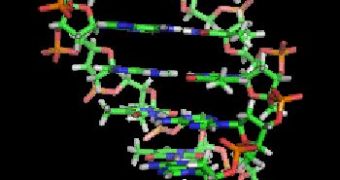Through an innovative computer simulation, experts at the University of Wisconsin-Madison (UWM) have finally been able to provide a fairly clear and accurate description of some of the processes that take place between two individual strands of DNA, when they come together to form the double-helix structure we are all familiar with. All the events that take place when two strands of DNA unite are collectively known as hybridization, and this is the fundamental process of life.
Everything about an organism is inscribed in its DNA, including how it will look like, what it will sound like, in what way the internal organs will be distributed and its behavior. All of this knowledge is encoded into DNA strands in what is known as the “blueprint” of everything inside the body, or cell. The UWM Howard Curler Distinguished Professor of Chemical and Biological Engineering, Juan J. de Pablo, says that studying hybridization is of paramount importance for technologies such as DNA microchips or the DNA-based nanoscale assembly.
The main ingredients of DNA and RNA are known as nucleobases, and, in the case of DNA, they are cytosine, guanine, adenine, and thymine. They are known mostly under the letters C, G, A, and T, and have been proven to only combine in pairs of two: A (adenine) pairs with T (thymine), while G (guanine) pairs with C (cytosine). De Pablo explains the UWM finds in a relatively simple manner. “The two strands of DNA somehow find each other, they connect to each other in no particular order, and then they slide past each other for a long time until the exact complements find one another in the right order, and then they hybridize.” This repetitive sequence of steps is referred to as the diffusive process.
In the paper, which was published in the October 5 issue of the journal Proceedings of the National Academy of Sciences (PNAS), it is also revealed that the hybridization process is extremely sensitive to the composition of the nucleic acid. “Contrary to what was thought previously, we found that the actual process by which complementary DNA strands hybridize is very sensitive to the sequence of the molecules,” de Pablo says. Once the correct succession of nucleobases has been discovered, the strands fuse with each other in a highly organized and rapid manner, giving birth to a new, double-helix structure.

 14 DAY TRIAL //
14 DAY TRIAL //